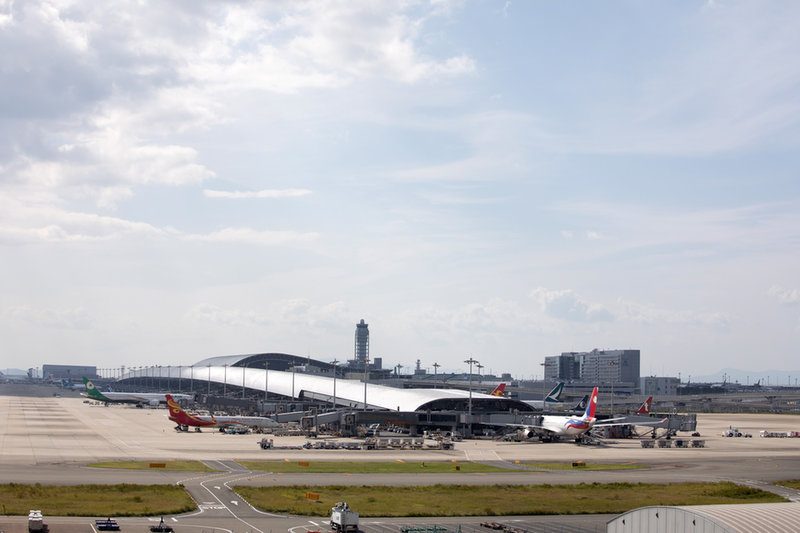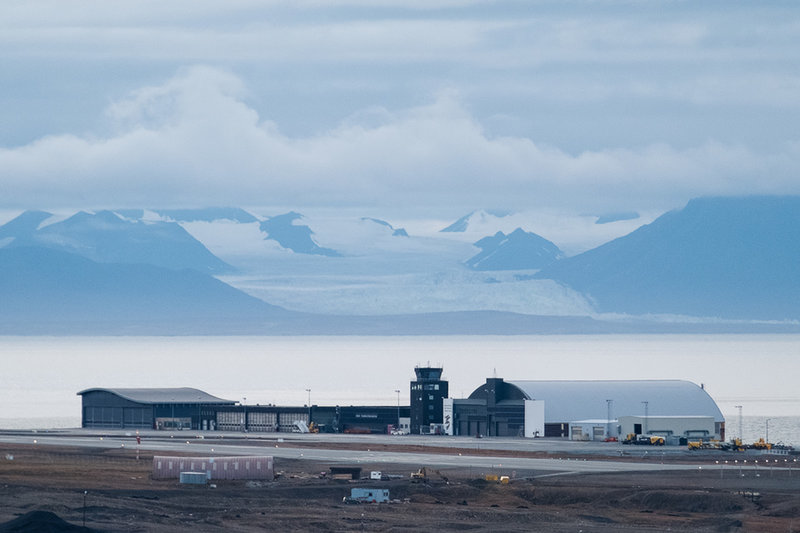OPERATIONS
Storm warning: airports adapt to a changing climate
As a changing climate continues to barrage airports and airlines with challenging conditions, efforts to adapt to future climate risks are more urgent than ever. What threat do the world’s increasingly chaotic weather conditions pose to global aviation, and how is the industry responding? Chris Lo finds out.
Image: copyright
While airports, and the aviation sector more widely, continue to suffer amid the Covid-19 pandemic, the spectre of climate change and the urgent need to decarbonise hasn’t gone anywhere.
Naturally, airport operators are currently focusing the lion’s share of their attention on the immediate crisis of the pandemic, but there’s a risk that this focus could push global warming down the industry’s priority list, leaving the world more vulnerable to the existential threat of climate change.
“While everyone welcomed the short-term respite from spiralling emissions, the pandemic’s long-term impact on climate change could be negative,” wrote Zurich Insurance Group chief risk officer Peter Giger in a blog for the World Economic Forum.
“As governments, businesses and individuals focus on rebuilding shattered economies, balance sheets or simply paying the rent, the green agenda could become a ‘nice to have’.”
This risk of Covid-19 distracting from climate goals has been acknowledged at the broadest levels of the airport sector. In November, industry association Airports Council International (ACI) adopted a resolution stressing the need to place climate change mitigation and adaptation efforts at the heart of the industry’s recovery from the pandemic.
“Sustainability is one of the key pillars of our industry and climate change continues to pose the highest long-term risk that the world faces and that [could have] far-reaching impacts, including an increased risk of emergence of future pandemics,” said ACI World director general Luis Felipe de Oliveira.
Recognising the climate risks for airports
One half of the equation is finding environmental efficiencies in a tough-to-decarbonise industry.
From investment in sustainable aviation fuels to improving the environmental performance of airport terminals, the sector needs to work towards net-zero carbon goals in the long term.
The other half, which tends to be less openly discussed, is adapting airports and the commercial aviation sector as a whole to the environmental consequences of climate change.
These impacts include a greater frequency of delayed and cancelled flights due to more severe weather conditions and changing wind patterns; damage to key airport infrastructure as a result of higher summer temperatures; and flooding of runways and taxiways from increased precipitation and the impact of sea-level rises, some degree of which looks inevitable at this point.
For Egis principal consultant Ben Bouzon, the climate threat to airports sunk in when he saw photos from Kansai International Airport in Osaka, Japan in September 2018, when Typhoon Jebi caused extensive flooding of the airport’s runways and apron, sited on an artificial island in Osaka Bay. Kansai was able to restart some domestic flights within a few days, but normal operations could not resume for about a month after the storm hit.
We have seen wind velocities 34% higher than the average of the last 30 years.
“The photos were rather incredible – the airport is next to the sea and half of the runway was underwater; there were planes with water up to their engines,” Bouzon says. “It was quite apocalyptic, actually.”
Bouzon also highlights an incident at Qatar’s Hamad International Airport in late April this year, when a parked Boeing 787-8 Dreamliner (weighing 120 tonnes) broke loose from its chocks and collided with another parked plane, as a sandstorm battered the airport with 80mph winds.
Floods and heavy winds are not new challenges for the aviation industry in themselves, but evidence suggests these events are becoming more frequent and severe. According to 2019 data from ACI World’s survey on resilience and adaptation to climate change, nearly 70% of responding airport operators reported that they had already felt the impact of intensifying weather patterns and conditions.
Late last year, Qantas Domestic and International CEO Andrew David told The Australian that climate change was to blame for higher rates of flight delays and cancellations in Australia, with the change of prevailing winds from south-south-westerly to westerly forcing the closure of runways at Sydney Airport and higher wind speeds creating challenges in general.
“We have seen wind velocities 34% higher than the average of the last 30 years,” David said.

Kansai International Airport saw major flooding in 2018. Credit: HIROSHI H / Shutterstock.com
An unpredictable threat
From high winds to flash floods, sandstorms and extreme temperatures, there’s a wide range of nasty surprises being sprung on the global airport industry. This unpredictable medley of potential impacts makes it harder to prepare for the worst-case scenarios.
“Operationally, we don’t really know what you need to do to protect yourself from these events,” Bouzon says. “If I’m an airport general manager, it is hard to predict how the weather is going to impact my operation. Is it snowstorms, or will it be wind and rain?
"Because there are different ways to deal with these weather events, and I think this unpredictability is really stopping people from investing.
Comprehensive climate change resilience and adaptation risk management strategies are needed.
“When you talk about that resilience, it touches on how airports are operated and it becomes quite sensitive. It’s a bit like talking about cybersecurity; everybody’s doing it, but they won’t tell you the details because it exposes their vulnerabilities to competitors, investors or partners.”
For years, the airport community has been engaged in a quiet but intensive assessment process for climate risk, as individual airports work to establish the key climate or meteorological events that could be heading their way.
“Comprehensive climate change resilience and adaptation risk management strategies are needed to ensure the continuity of operations and airports are looking for opportunities to build back better, where sustainability is at the core of these recovery plans, balancing environmental protection, social welfare and economic development,” said de Oliveira in November.
Investing in climate resilience
Examples of airport research into climate risks and resilience include Avinor, Norway’s state-owned airport operator, which has spent many years developing plans to make its airports – the majority of which are located along the country’s wet and windy coastline – more resilient to wind, waves and rising sea levels.
Based on the operator’s modelling, new requirements have been set for new runways, which must be built at least 7m above sea level, and more capacity has been added to Oslo Airport’s 90s-era drainage system.
The aviation world is already sharper than most when it comes to keeping an eye on developing weather patterns, and new protocols made possible by data analytics and digital technologies could make airports, airlines and air navigation service providers (ANSPs) better-equipped to deal with the adverse conditions of the future.
Extended arrival manager systems, which optimise arrival management and allow for aircraft to be slowed down so their time waiting in fuel-intensive holding stacks is reduced, are already being rolled out in some regions.
The aviation world is already sharper than most when it comes to keeping an eye on developing weather patterns.
Global satellite surveillance, such as the space-based ADS-B network being developed by US-based Aireon in partnership with key ANSPs, could also improve the aviation sector’s ability to tweak flight plans to avoid adverse weather conditions or make better use of the Atlantic jet stream. Digital connectivity will help bring these disparate pieces of the puzzle together for airports.
“That connectivity is referred to in the air traffic management world as SWIM [system-wide information management],” says Bouzon. “It’s a secure communication protocol that airlines, airports and ANSPs could use to exchange this data, so you know exactly when to send your ground crew, you know exactly when your air bridge is going to be free.
“Once you know what the future’s going to look like, one day or one week ahead, you need to be able to run your operation flexibly to adapt to whatever that picture’s going to be.”

Svalbard Airport in Norway.
Making the business case for climate resilience
Of course, all of these innovations require heavy investment, and while funding sources for climate mitigation and adaptation are becoming more common, the evolving global discussion around the environmental ethics of air travel – including the so-called ‘flight shaming’ movement – is putting a question mark on future growth for airports.
“We see a shift in behaviours from travellers – there might be less business travel; there might be more conscious travelling,” Bouzon notes. “People might no longer go for a weekend in Dubai, for example. And therefore, it’s harder for [airports] to invest because they don’t know if the growth is going to be there.”
But the business case can be made for investing in climate resilience, and sustainability initiatives more widely. More resilient and sustainable airports will be better revenue generators, whether that’s due to incremental savings from more efficiently lit and air-conditioned terminal buildings, or from improved responses and reduced downtime in the event of climate-related incidents.
I think the public pressure will be so high that airports will need to grow back sustainably.
Maintaining business continuity will be key as the threat of disrupted flight schedules continues to grow. In that sense, general decarbonisation efforts also have value as resilience measures – for example, the growing frequency of diverted flights and the consequent increase in fuel burn drives the industry’s push for sustainable aviation fuels.
“I think the public pressure will be so high that airports will need to grow back sustainably,” Bouzon says. “The pressure is high in Europe already – a lot of countries have seen a fairly drastic reduction in air traffic because of the flight shaming movement, for example.
"Other regions around the world aren’t there yet, but I think it won’t take long, especially if climate change starts to become a lot more visible.”
As the impacts of climate change on airport operations become ever more obvious, the industry will have to come together like never before, both to protect itself from a changing climate and to make the case that it is making every effort to mitigate its role in an escalating environmental crisis.
